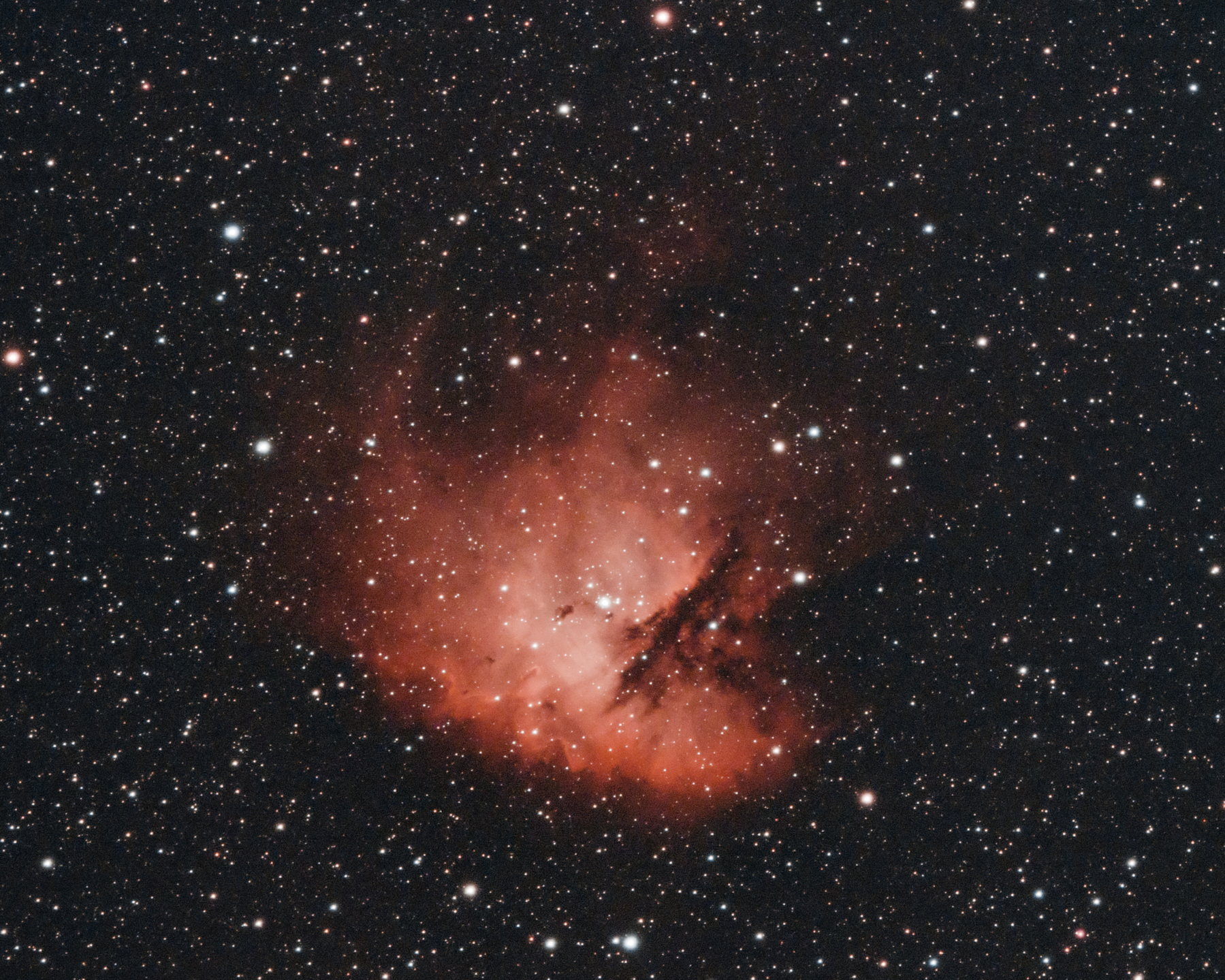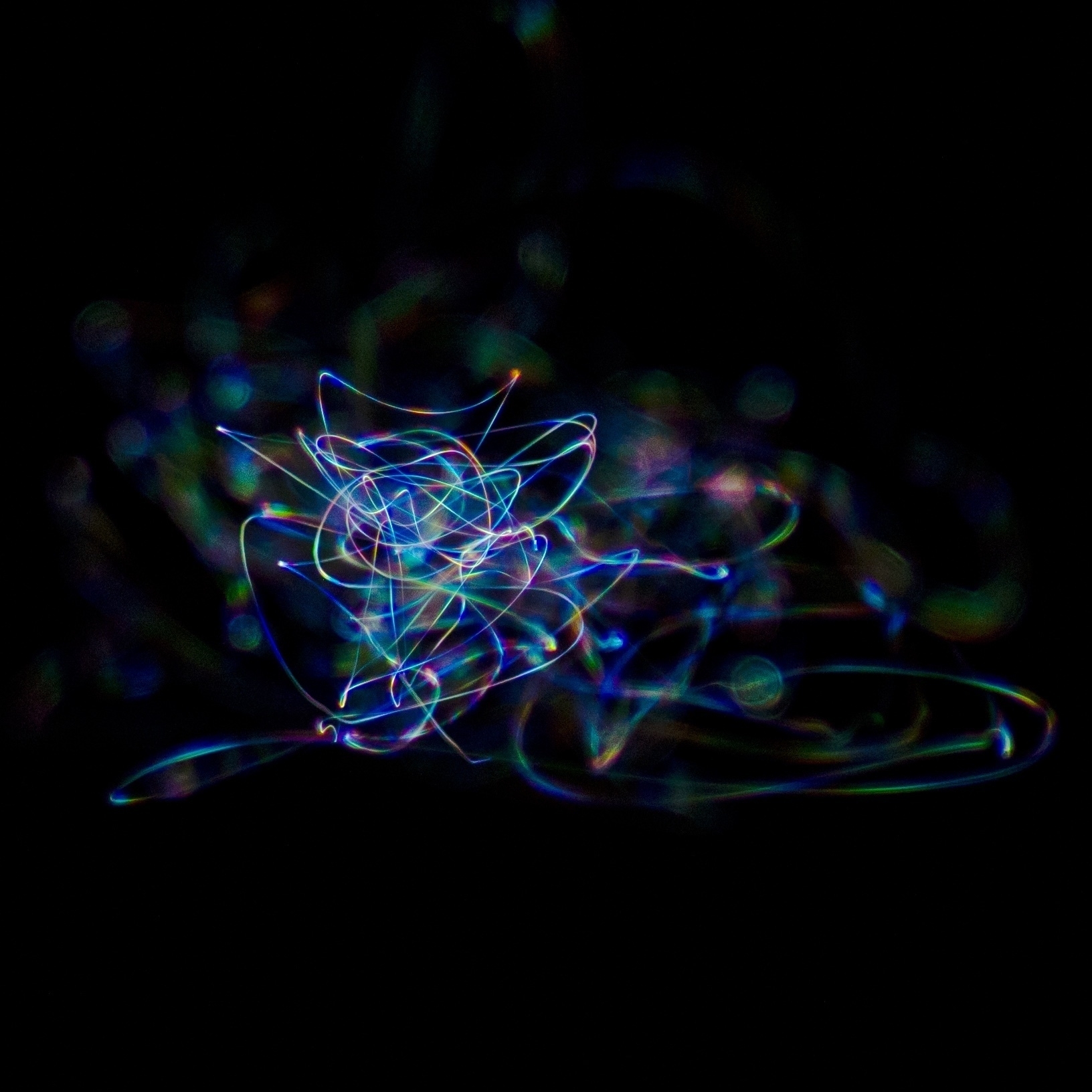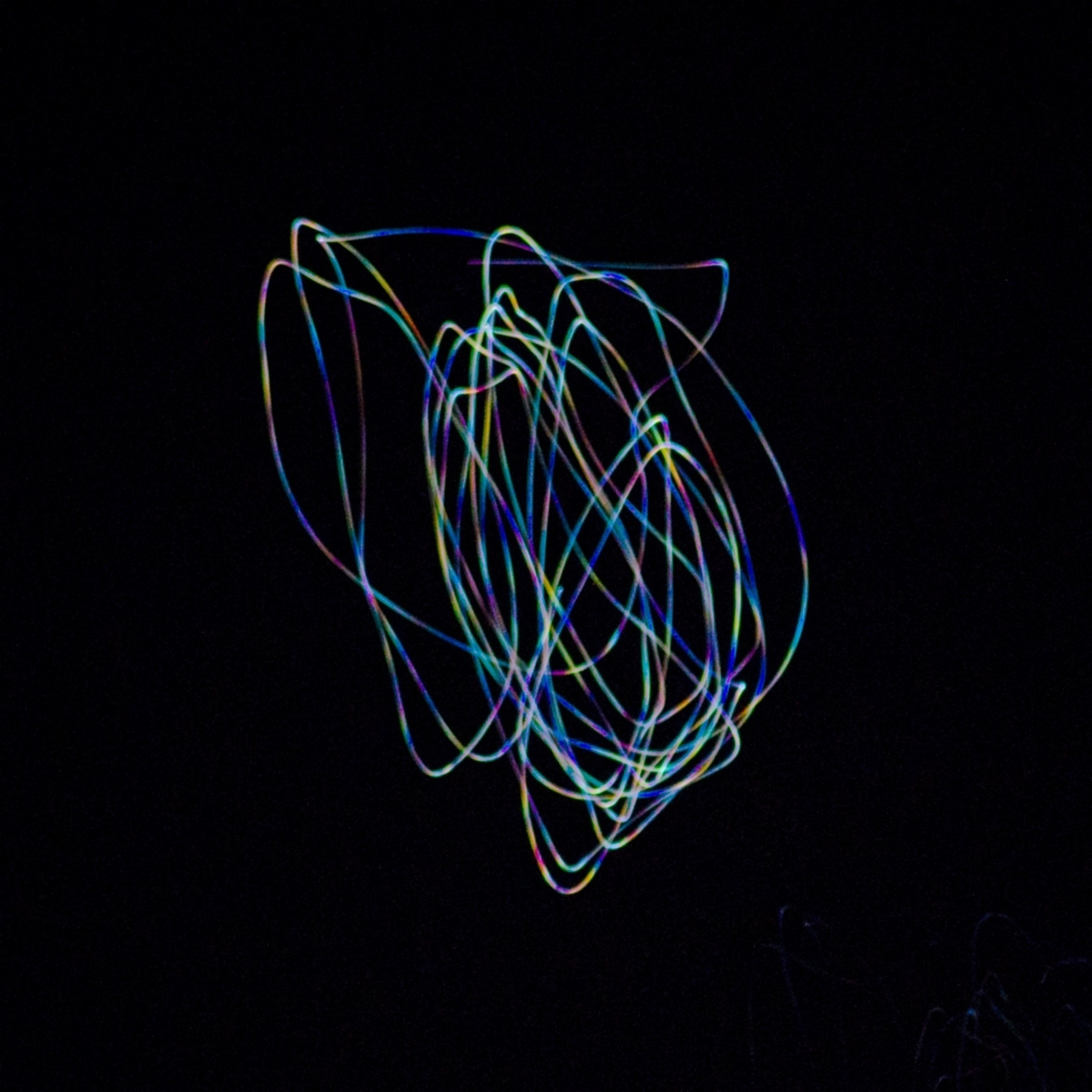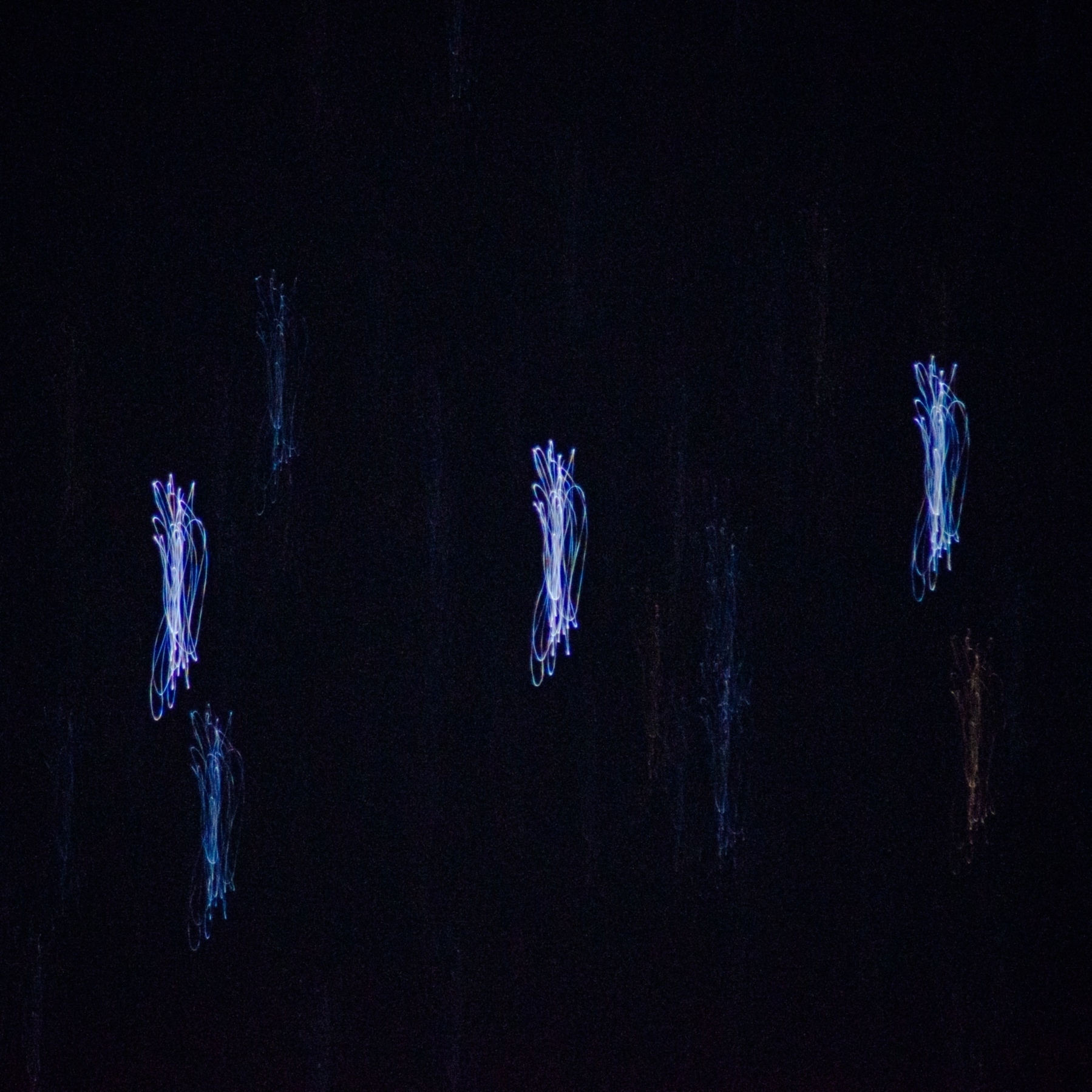stars
Mars in the Beehive
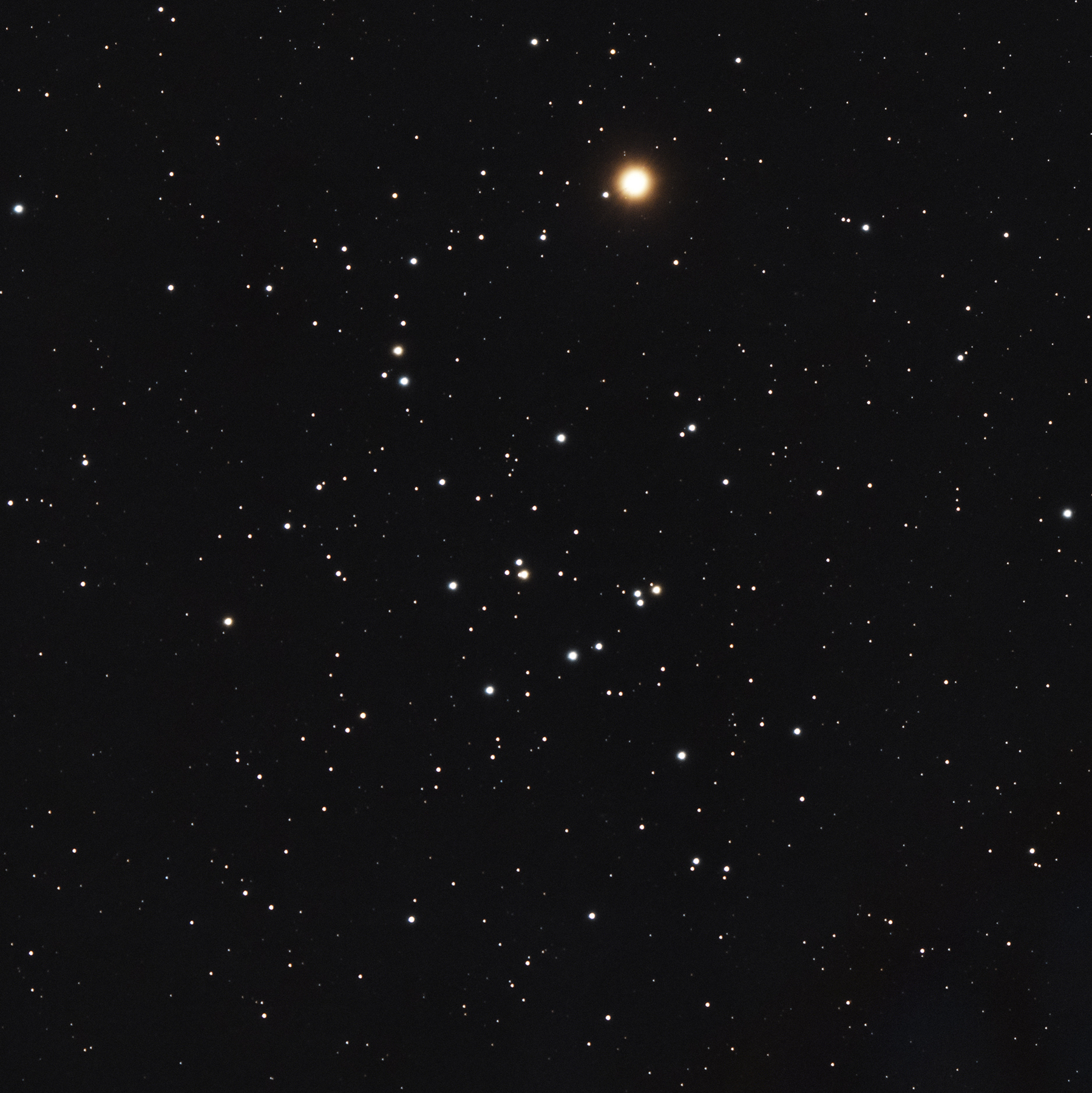
Mars and the Beehive star cluster (M44) in Cancer, which is one of the closest star clusters to us (at about 600 light years) and it can be seen with naked eyes. All the stars in this cluster are quite young - only ~600 million years of age.
Supernova SN2023ixf
Supernova SN2023ixf was spotted on May 19th and it continues to brighten. Took the top image on May 23rd and for comparison is an image from April 30th on the bottom. This supernova will continue to brighten over the next few days. This supernova is in galaxy M101 which is 21 million light years away. That means the event we are watching "live in real-time" actually happened 21 million years ago.
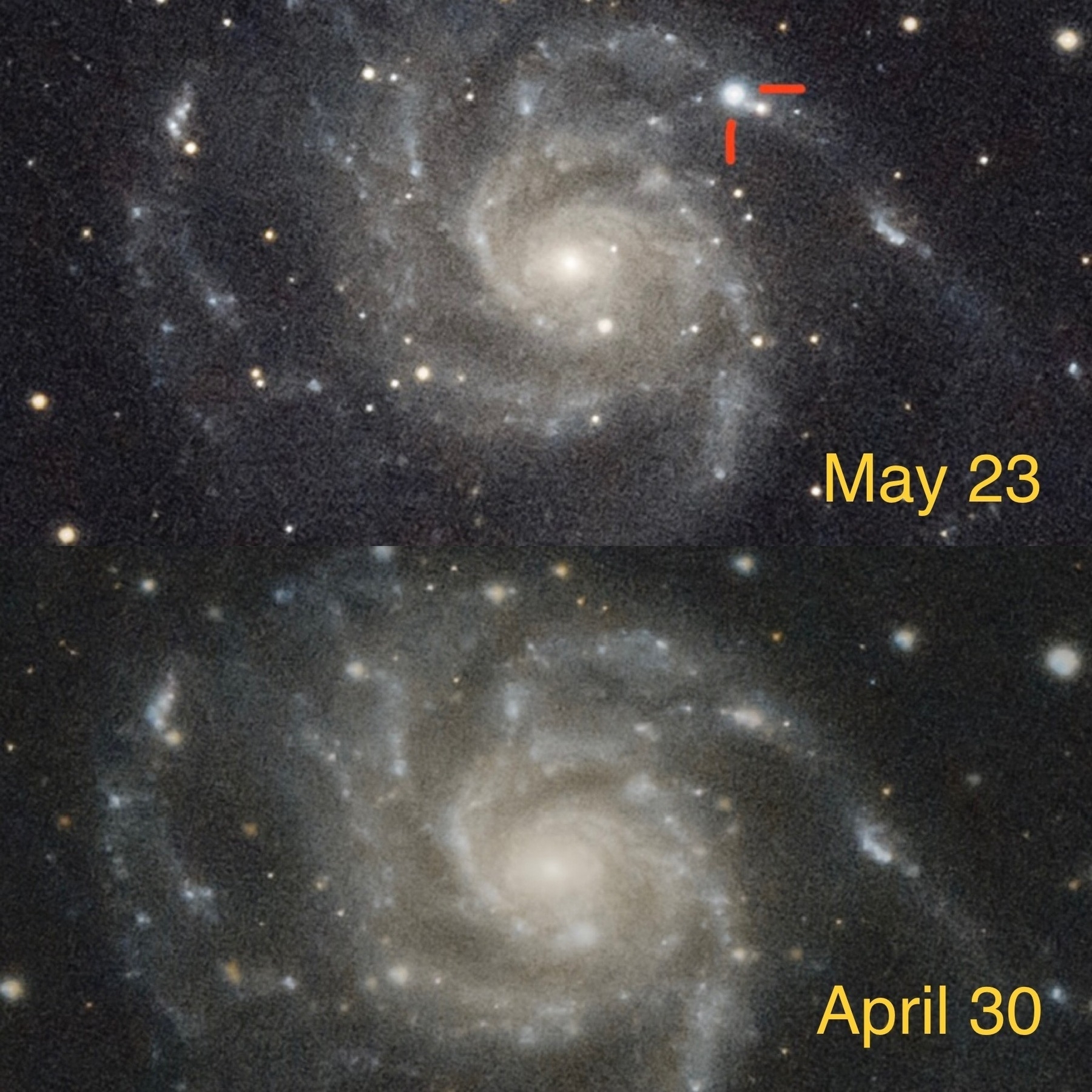
Rosette nebula - April 2023
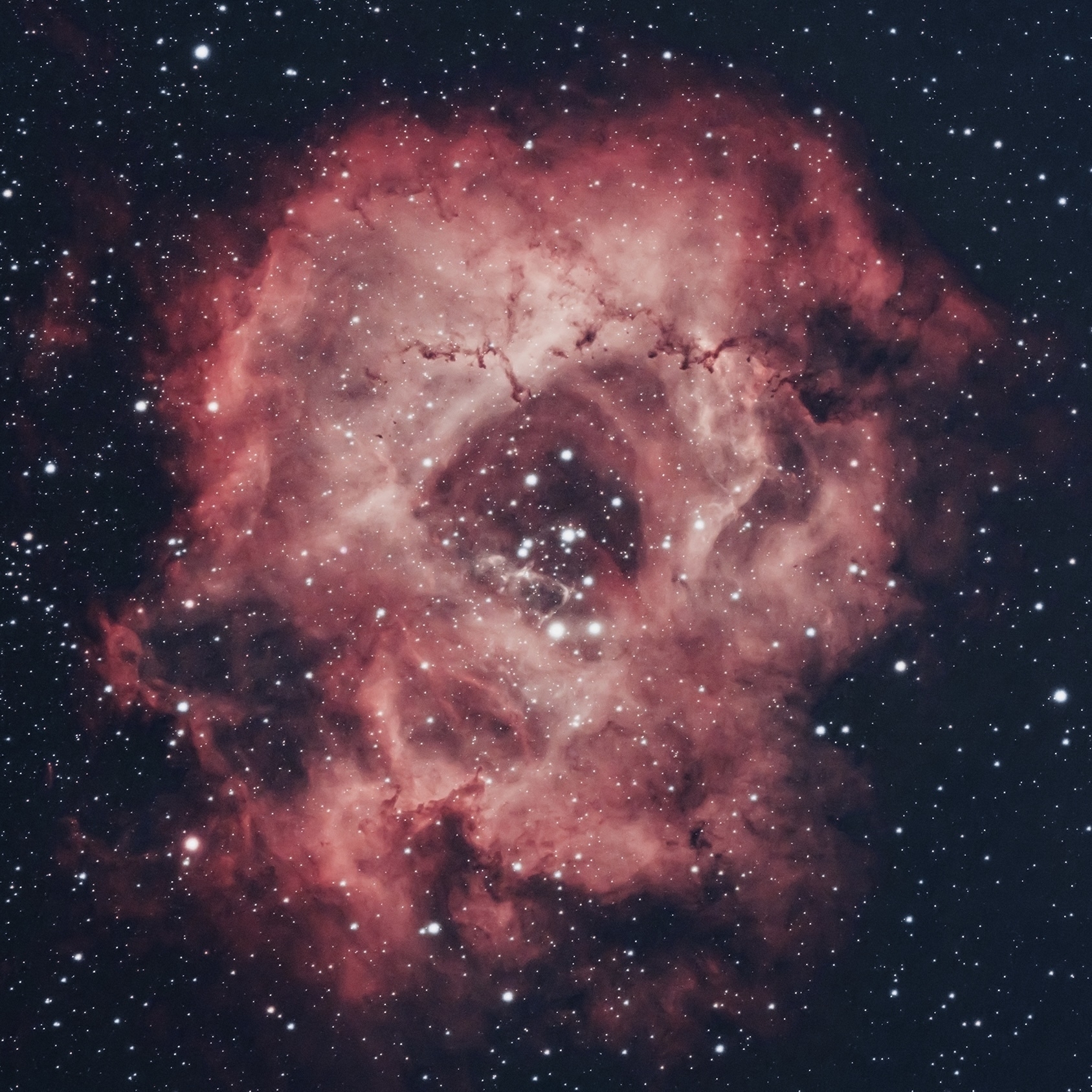
The Rosette nebula from Monoceros constellation at ~5000 light years, is one of the brightest nebula in the sky. The cluster of young stars (~4million years old) in the center provides the energy that makes this cloud glow. As always, the streaks of dark dust are the most striking features.
This image is a stack of forty 3 minute exposures (total exposure of 2 hours) taken with a 2.5 inch refracting telescope, William Optics ZenithStar 61, attached to ZWO ASI533MC-Pro camera with Optolong LeXtreme narrowband filter.
Mars and M35
Mars visiting Gemini on March 30, 2023. Open star cluster M35 at the bottom is at 2600 light years away and made up of young stars that are only 100 million years old. At the bottom right, the cluster of yellow stars (NGC2158) is made up of stars that are 10 times older and 6 times farther.
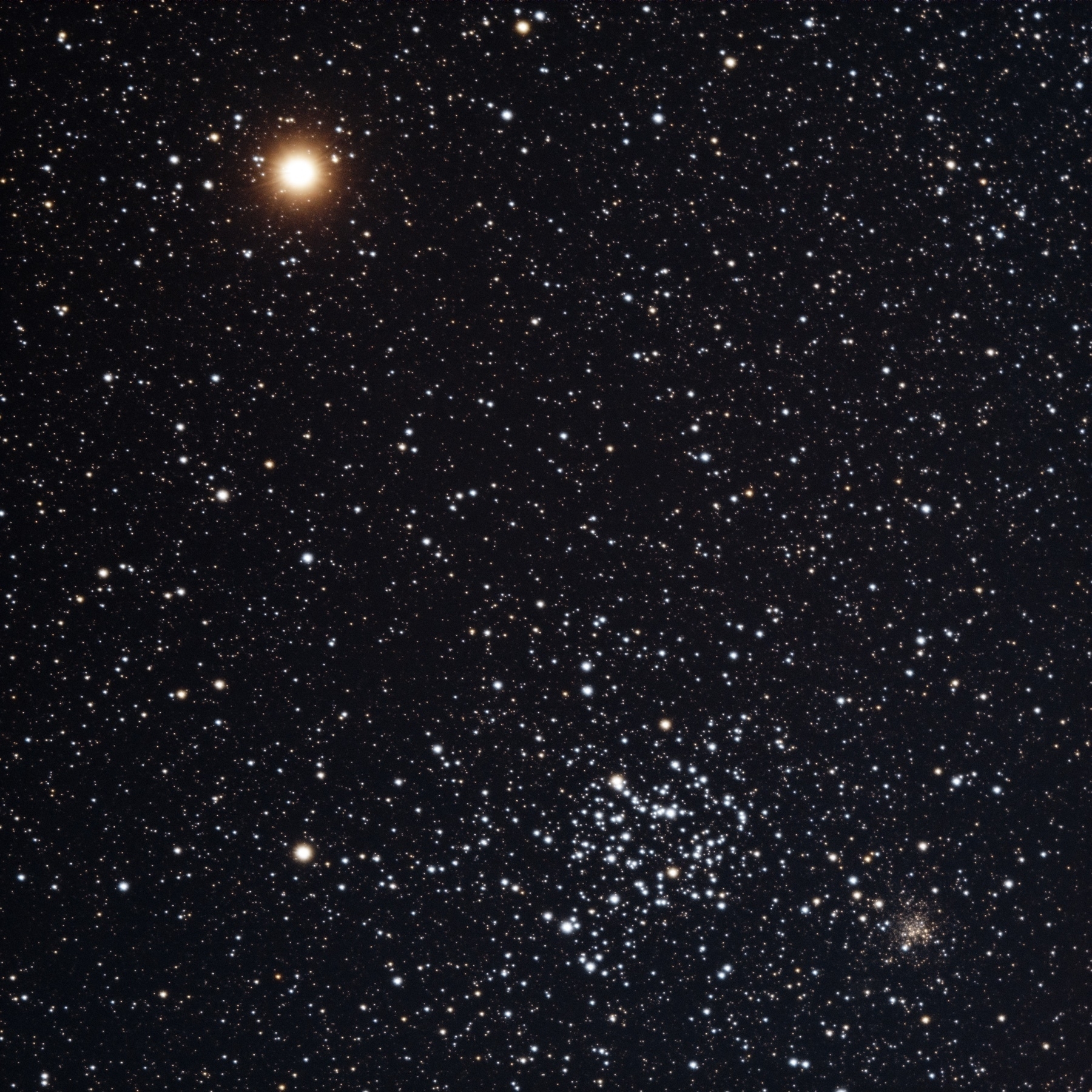
Canvas print
Got this photo of Elephant trunk nebula printed on canvas. It looks quite good considering its big size - 20x30 inches. Wasn’t sure how it will turn out. Last week, it was also featured on this website. They wrote such a nice description.
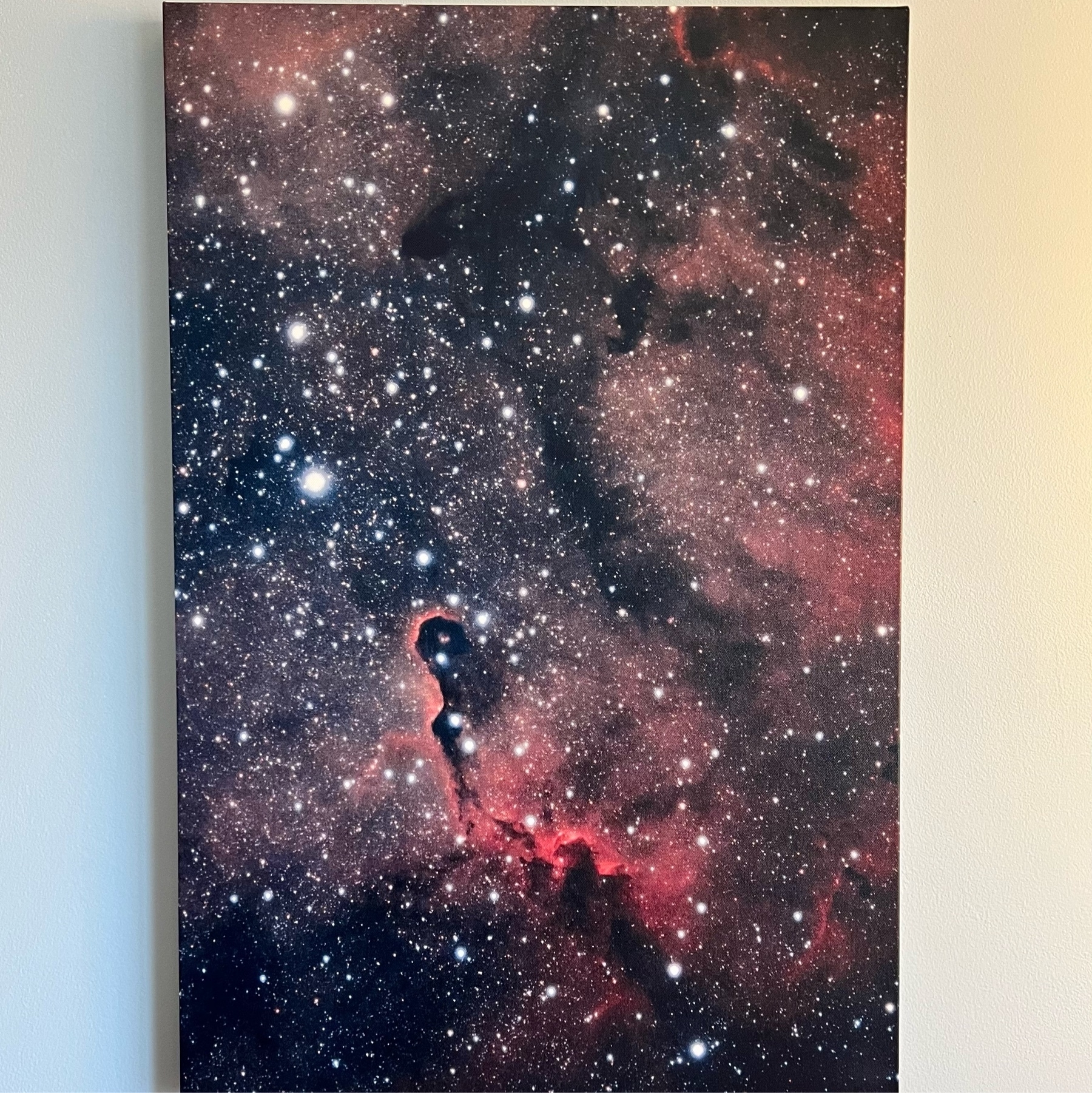
The Pleiades
The Pleiades (M45) aka The Seven Sisters aka Subaru is an open star cluster ~444 light years away. It is the nearest star cluster to us. The reflection nebulae around the young stars are left from the time of their formation about 100 million years ago.
WO ZS61; ZWO ASI533MC-Pro; 70 min (35x2m) total exp.
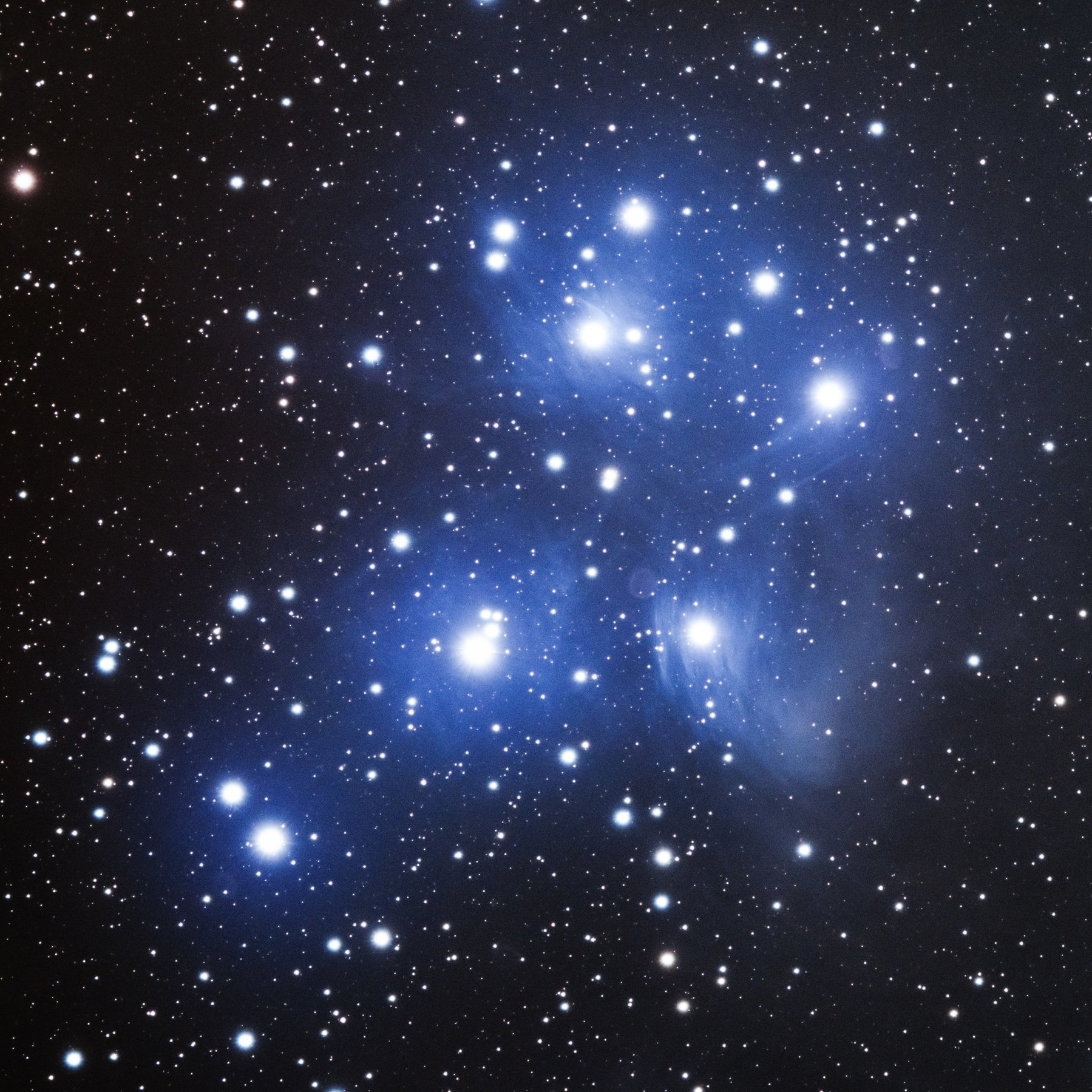
Running man and Orion nebulae
This must be my best effort at capturing the running man and Orion nebulae so far. This nebula is a region of massive star formation and is closest of such kind to Earth at ~1300 light years.
Taken with WO ZS61; ZWO ASI533MC-Pro. Only 40 one minute subs without any narrowband filter. Processed with Siril and Photoshop.
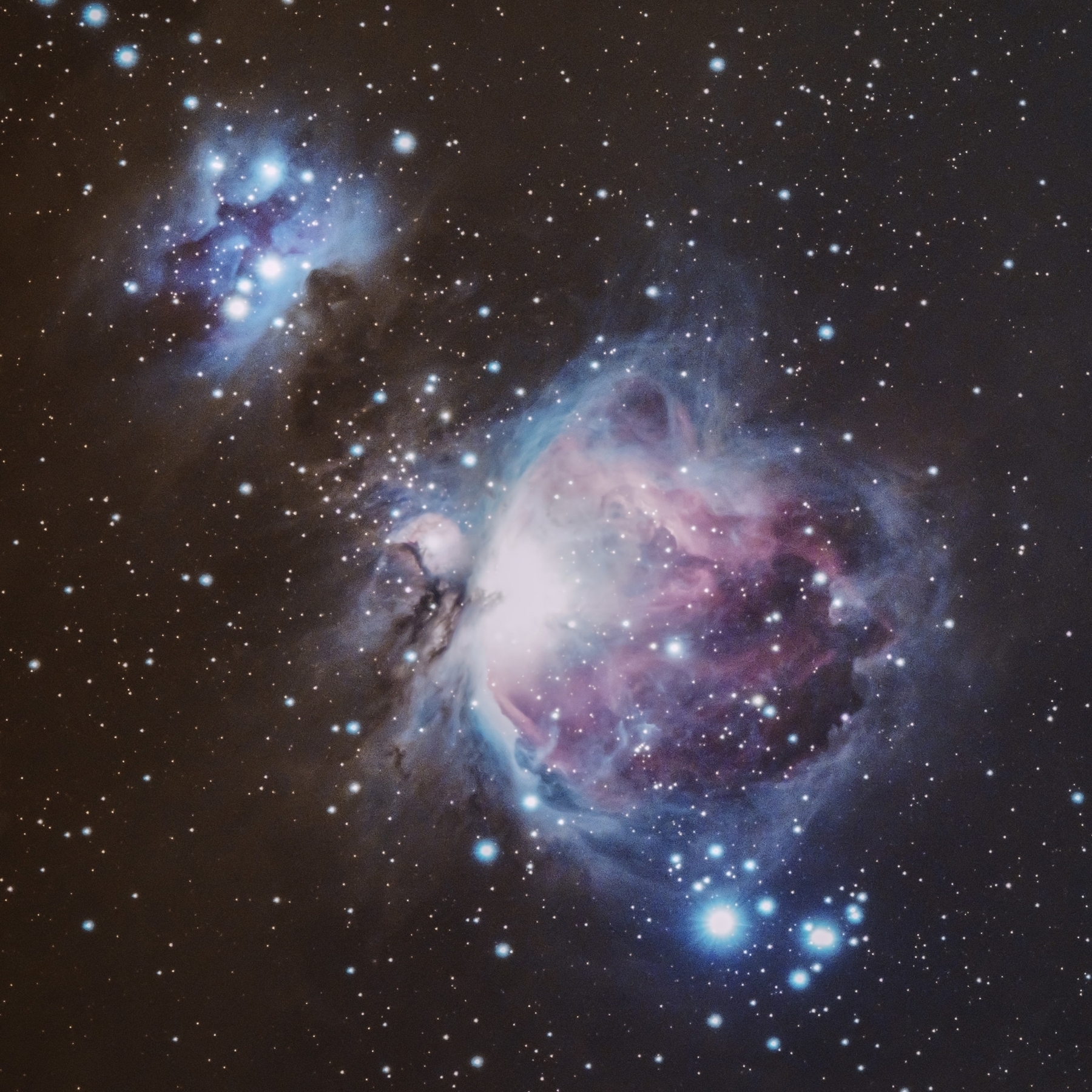
Western Veil nebula
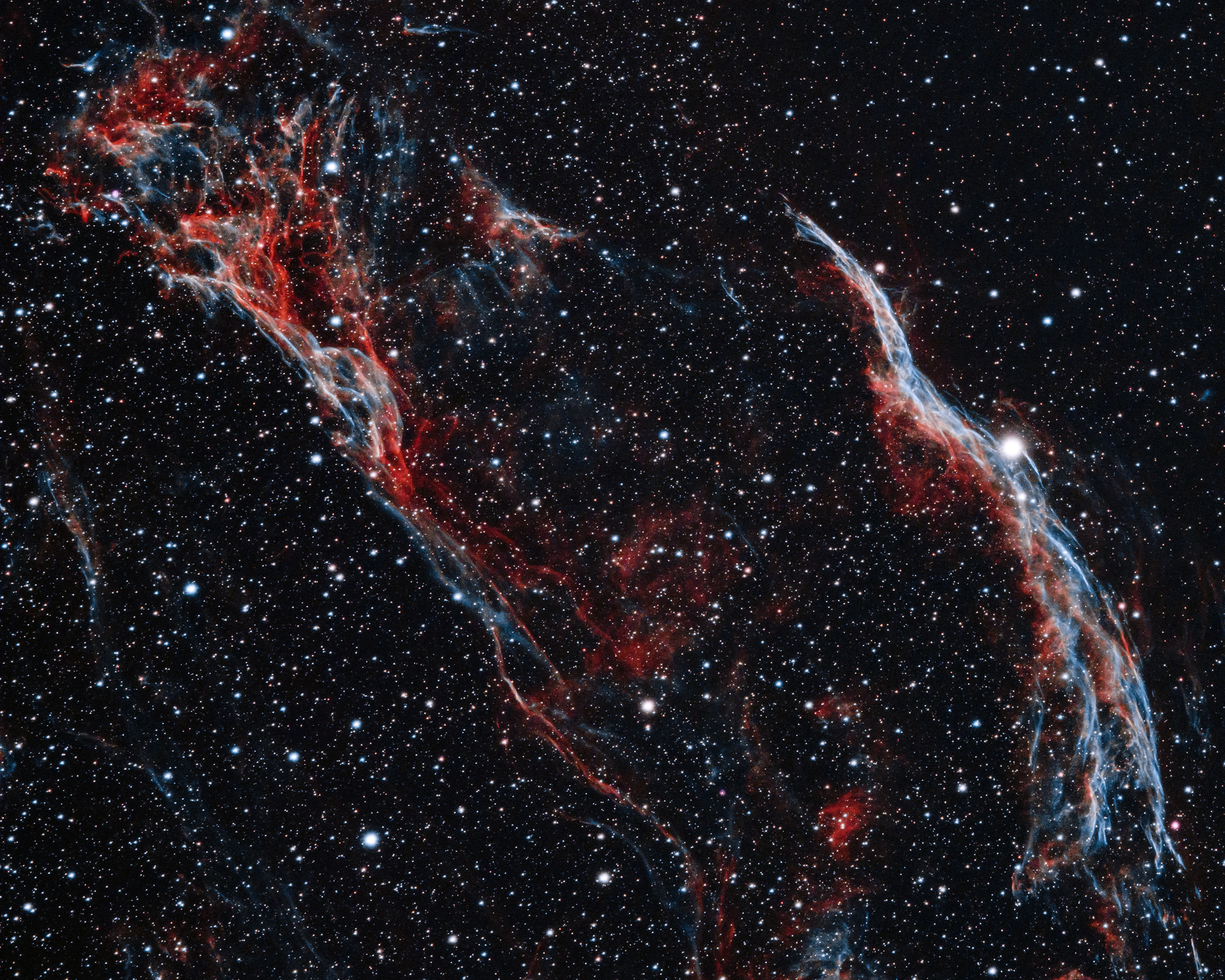
A part of the Veil nebula complex from Cygnus. This is Pickering’s triangle and Witch’s broom (NGC6960). This supernova remnant glows in Halpha and Oiii frequencies which is perfect for LeXtreme narrowband filter that selects those frequencies. I have tried this image several times before but this 4 hour exposure is the best so far. There is so much detail and color of the nebula that I couldn’t capture before.
Interestingly, the bright star near Witch’s broom, 52 Cygni is at 290 light years while the veil nebula is at almost 8 times that distance at 2400 light years. This supernova happened between 10,000 and 20,000 years ago. Anyone looking at the sky at that time probably saw a star much brighter than Venus.
WO ZS61 - ZWO ASI533MC-PRO - LeXtreme - 80 x 3 min - SIRIL - PS
Wide angle long exposure photos
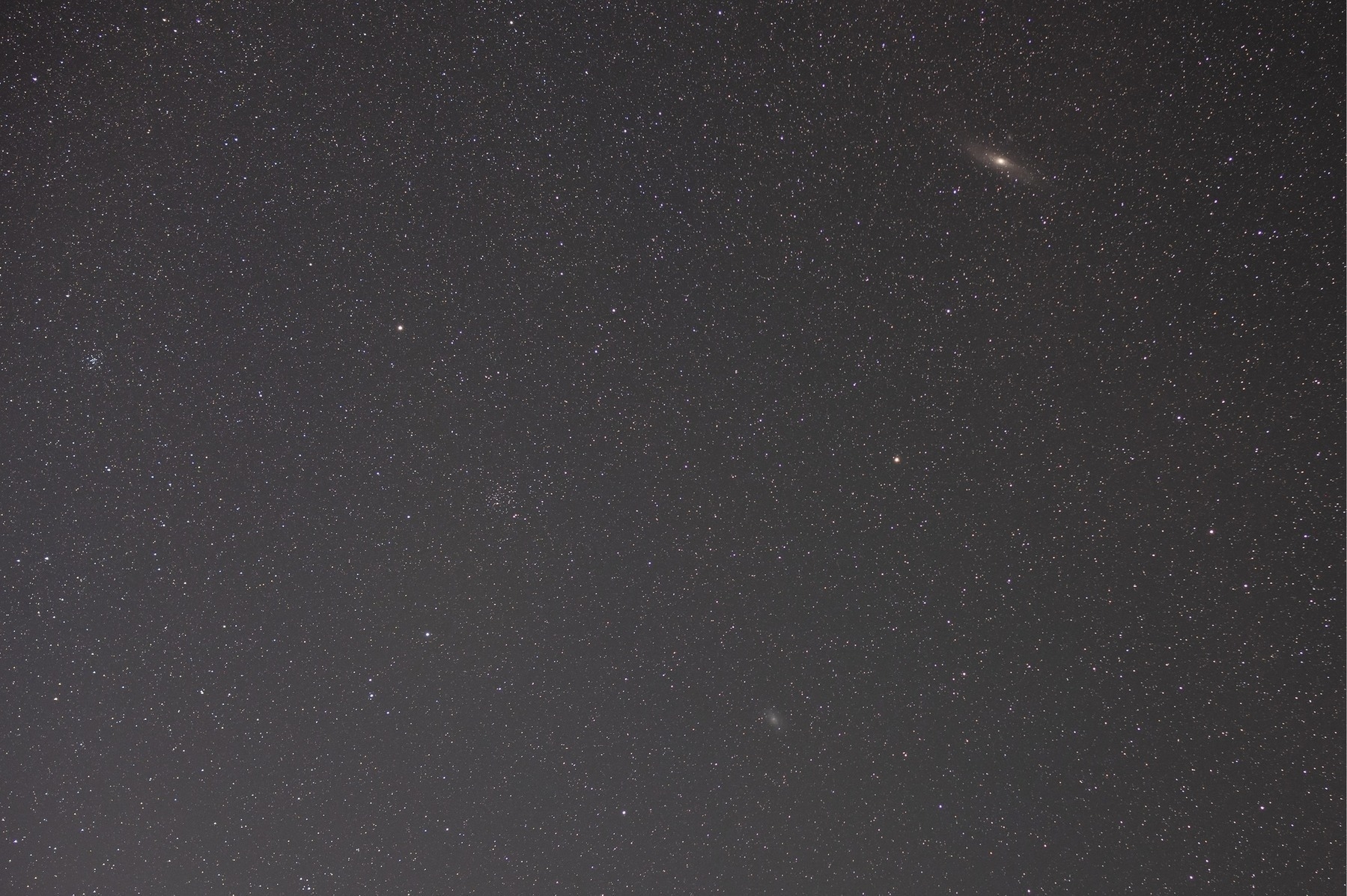
Playing with long exposure (3 mins) photos with a 40 mm lens attached to Nikon Z6 on a SkyWatcher star tracker. Here is one that shows Andromeda galaxy (M31), top right and Triangulum Galaxy (M33), bottom center. Also two open star clusters: M34 in Perseus (left edge) and NGC 752 in Andromeda (left center). This is just a single image with contrast adjustments in Photoshop, not a stack of multiple images.
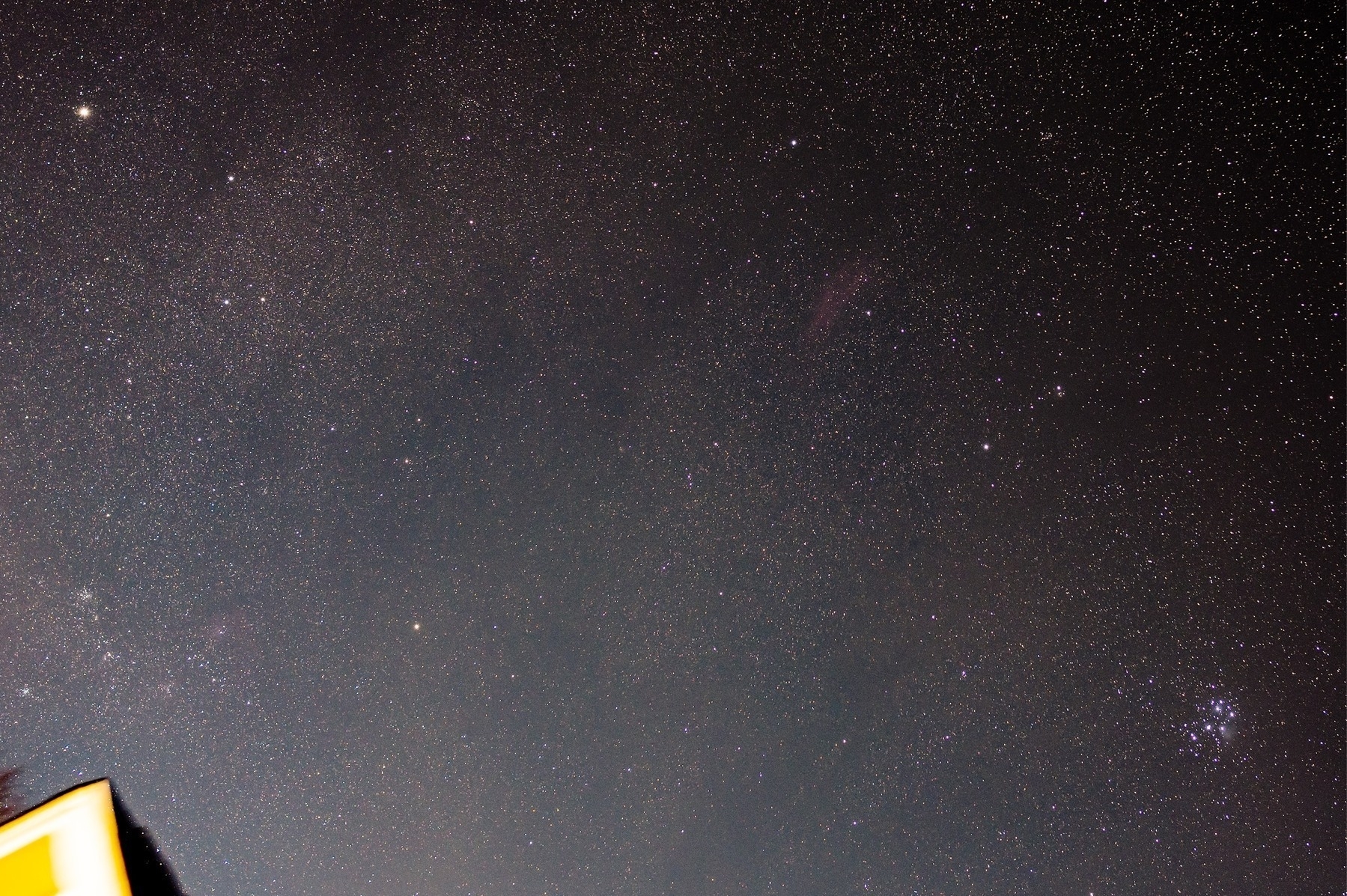
Another long exposure (3 min) photo showing Pleiades (bottom right), and ghostly reddish glow of California nebula (right of center). The bright star at top left is Capella and just above the roof, open clusters M36 and M38 are seen along with Flaming star and tadpoles nebula region in Auriga.
Bubble nebula - Nov2022
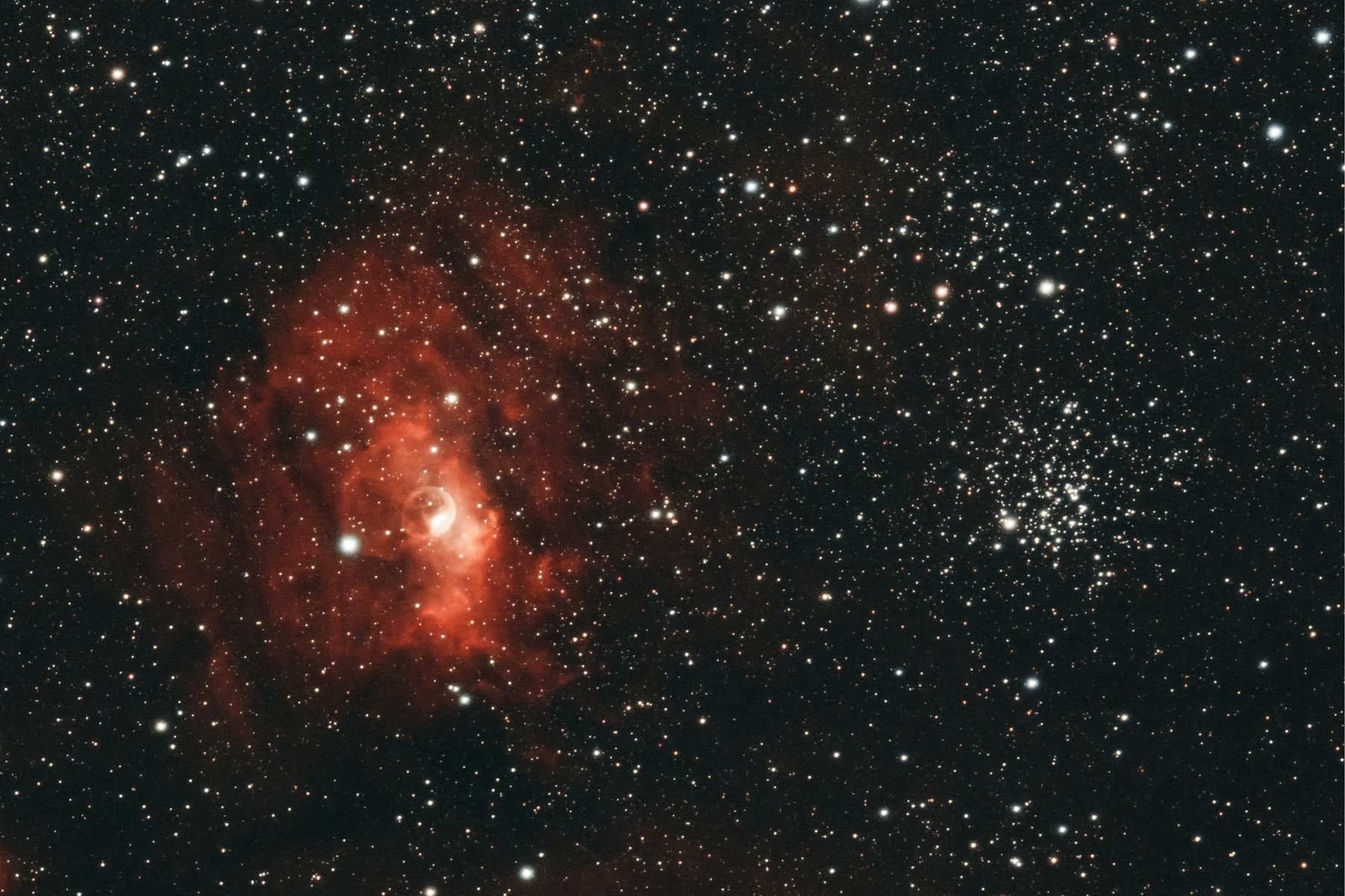
The Bubble nebula (NGC 7635) and an open cluster M52 in the constellation Cassiopeia. They appear next to each other but the nebula is ~11000 LY away while M52 is closer at a distance of only ~5000 LY. The bubble is about 10 LY across and is formed because of the intense radiation from the star inside it pushing the interstellar gas and dust.
This image consists of almost 3 hours of total exposure (35x5m). Optolong LeXtreme narrowband filter with ZWO ASI533MC-pro on WO ZS61. Processed with SIRIL and PS.
Eagle nebula - Oct2022

Eagle nebula aka Star Queen nebula (M16) in constellation Serpens, at about 7000 light years is home to the "Pillars of Creation" made famous by Hubble telescope. I always wanted to capture this but, my Southern sky is not completely open. I only get about one hour window for capturing these objects closer to the Southern horizon.
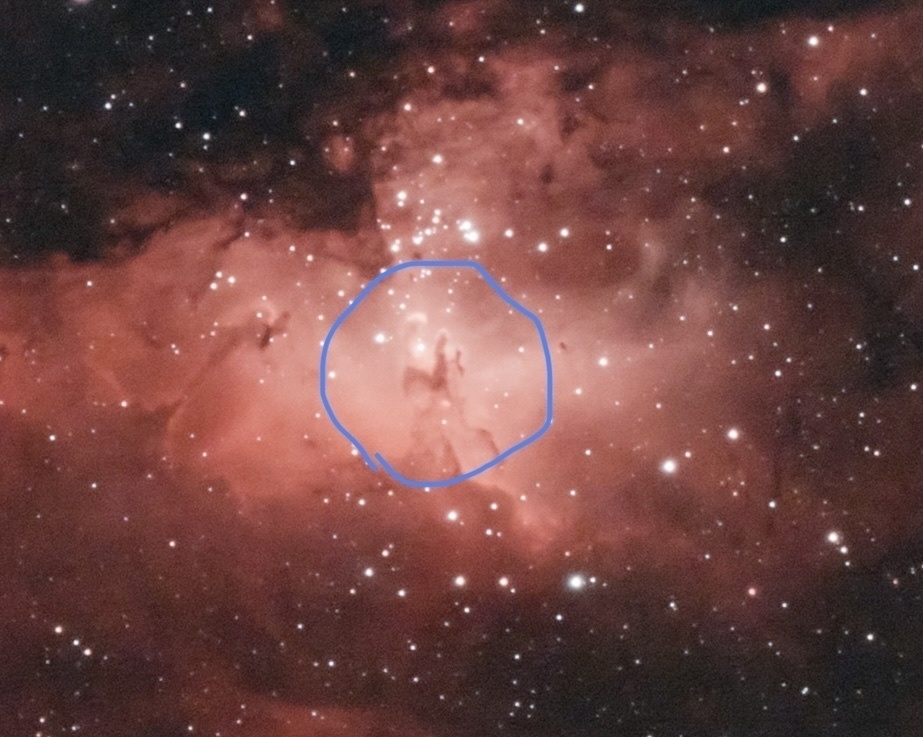
It was very satisfying to see that the "Pillars of Creation" were clearly visible in my image. The James Webb Telescope released its latest image of the pillars in midrange infrared light and it is just mind-blowing (see below). One can compare and quite obviously see the difference between a thousand dollar imaging setup and a billion dollar one. 😄
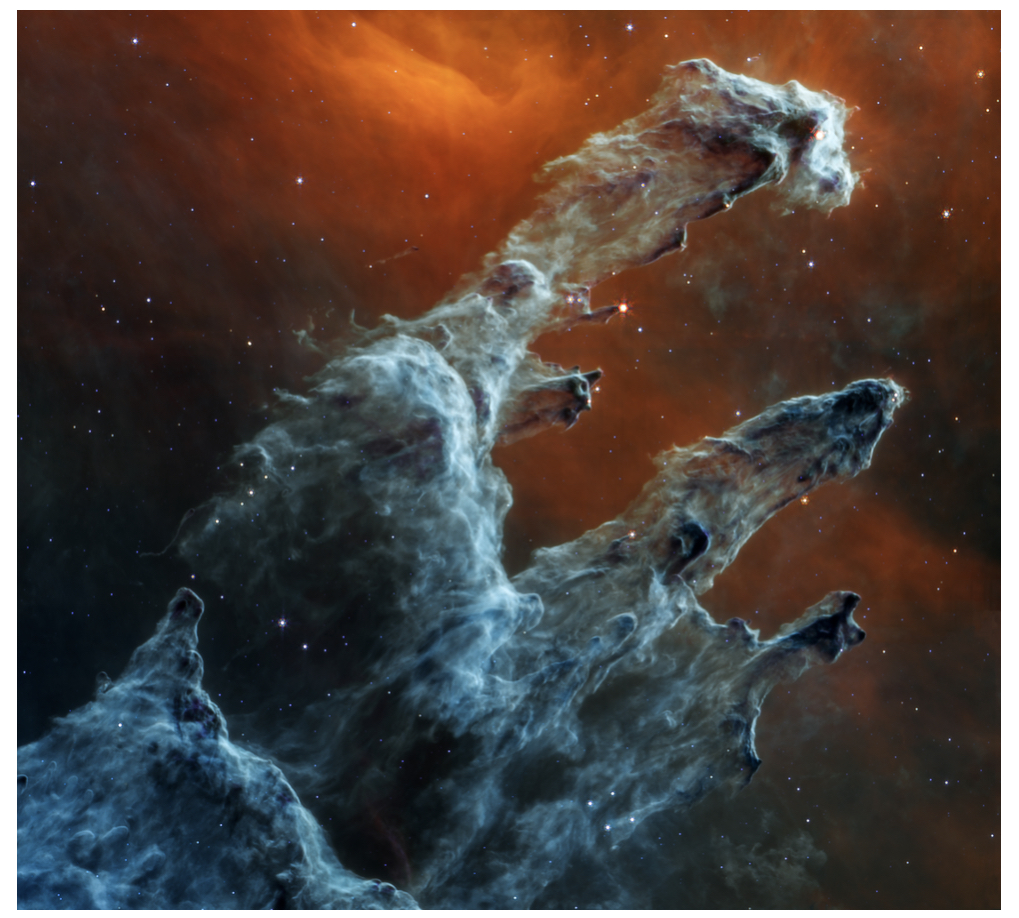
Telescope: WO ZS61
Camera: ASI533MC-Pro
Filter: Optolong L-eXtreme
Exposure: 50x1min
Processing: SIRIL and PS
Perseid meteor showers - Aug 2022
On the night of Aug 13th, set up my camera to capture Perseid meteor showers. Over 5 hours, caught 3 meteors and about 2 hours of continuous cloudless sky to make a startrails image.
Nikon Z6; Tokina 11-16mm f/2.8; 60 sec
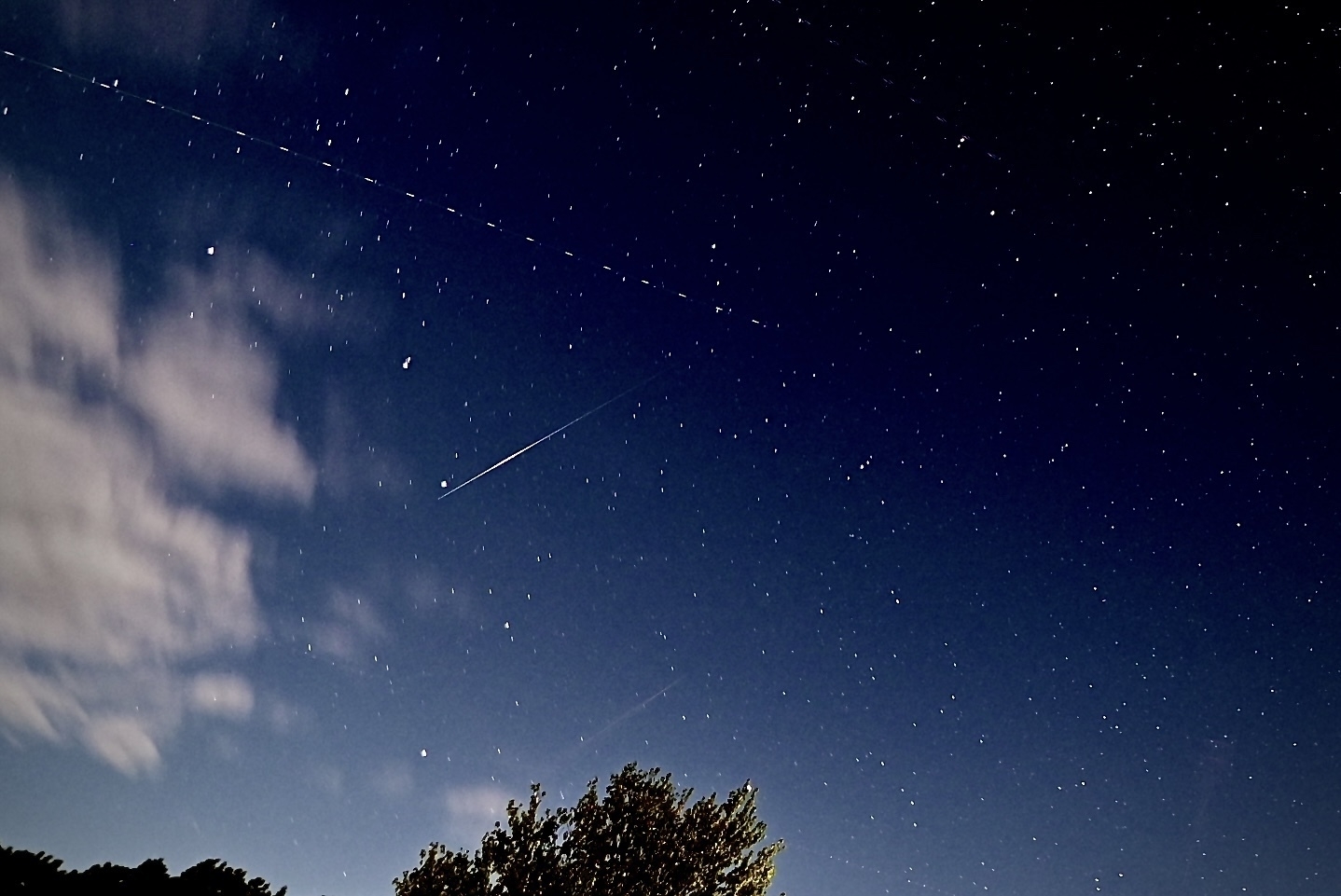
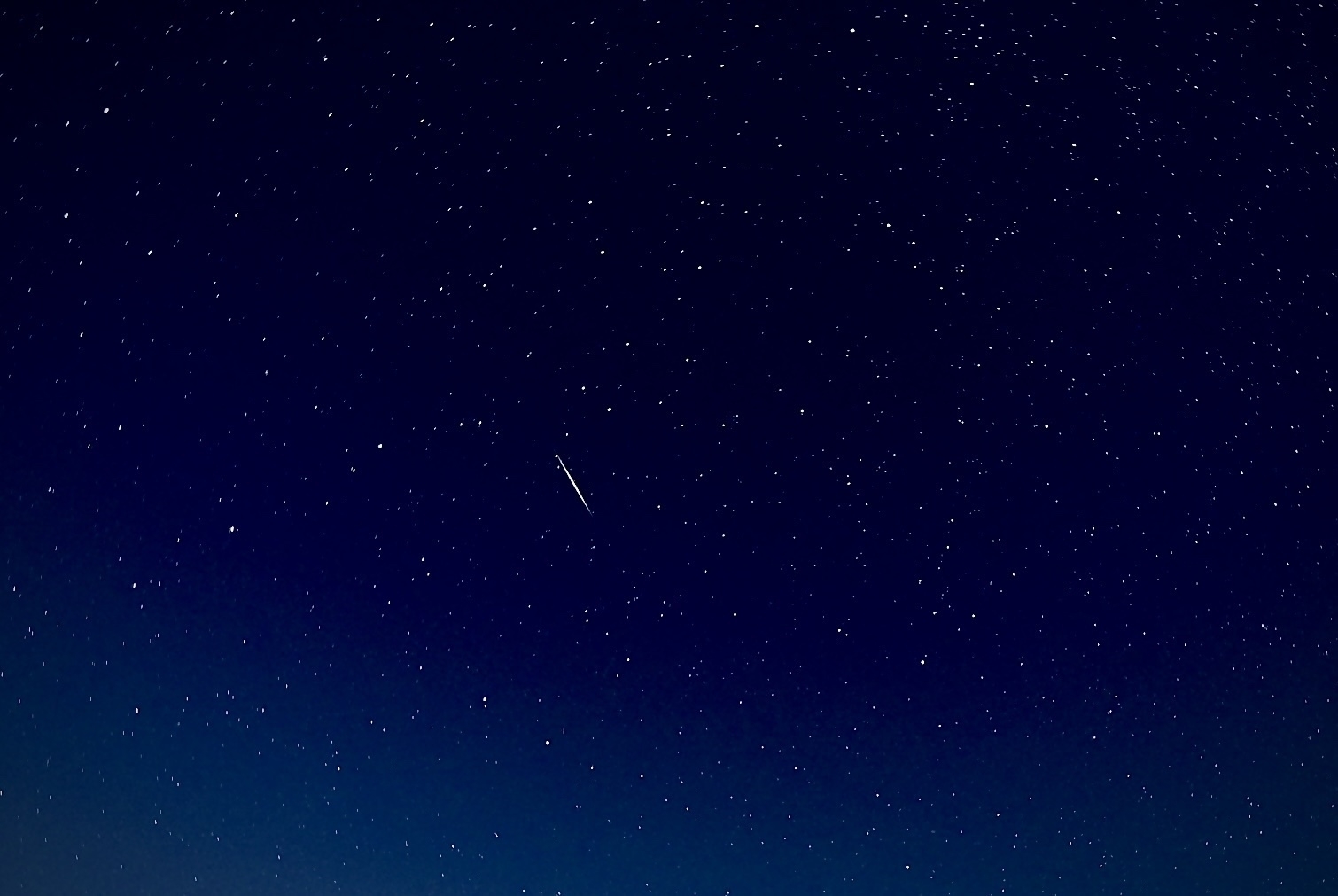
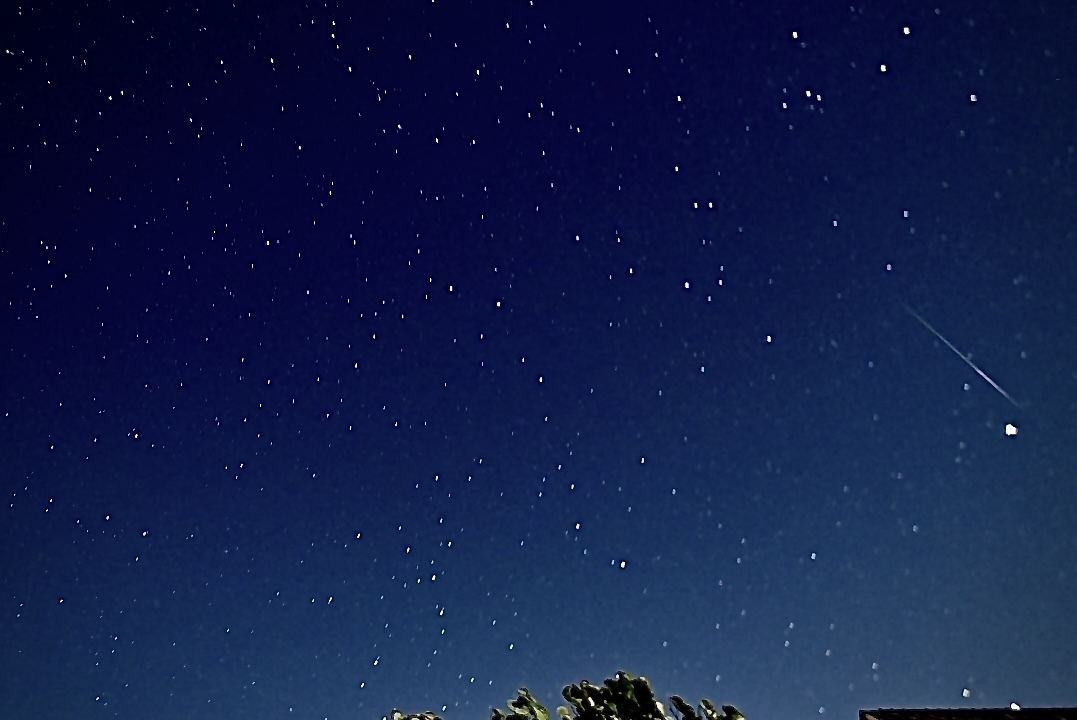
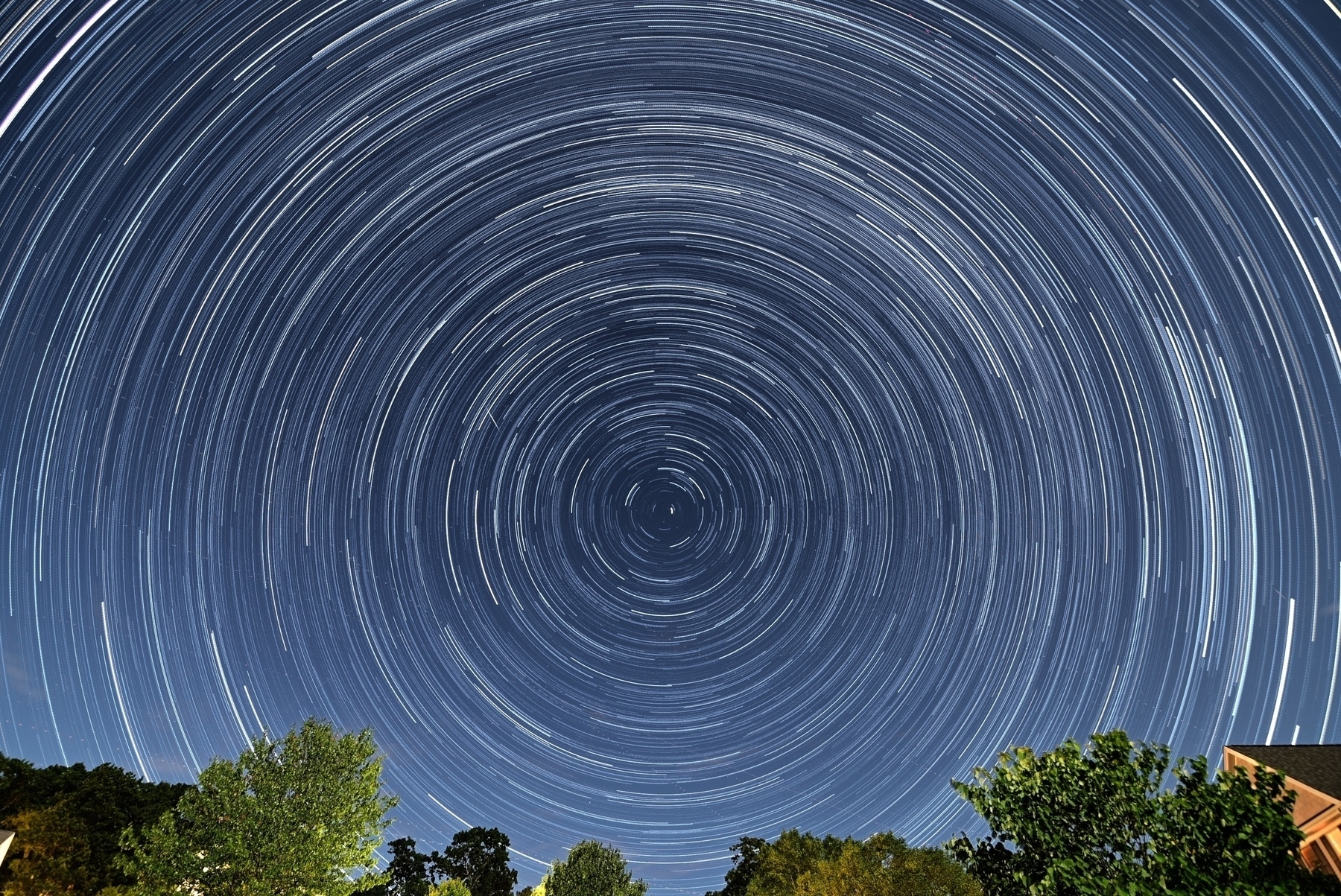
Startrails photo
One of my photos was published in the newsletter for a local land preservation trust, Lyme Land Trust. I have plenty of publications for my professional work but this recognition of my hobby makes me feel very happy.
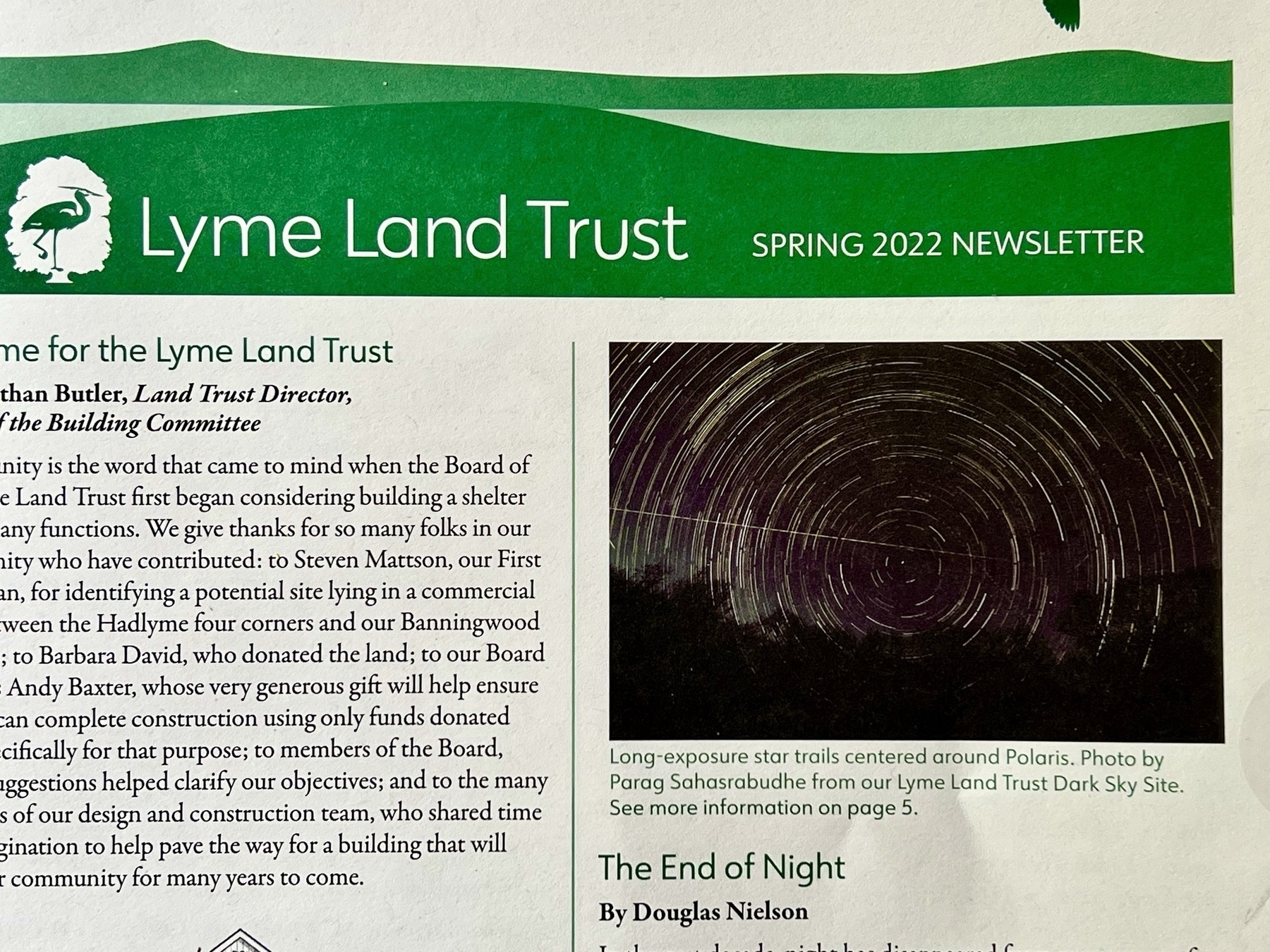
Here is the original photo that was captured back in the end of March 2022. It is a stack of 30 second exposures totaling to about 2 hours.
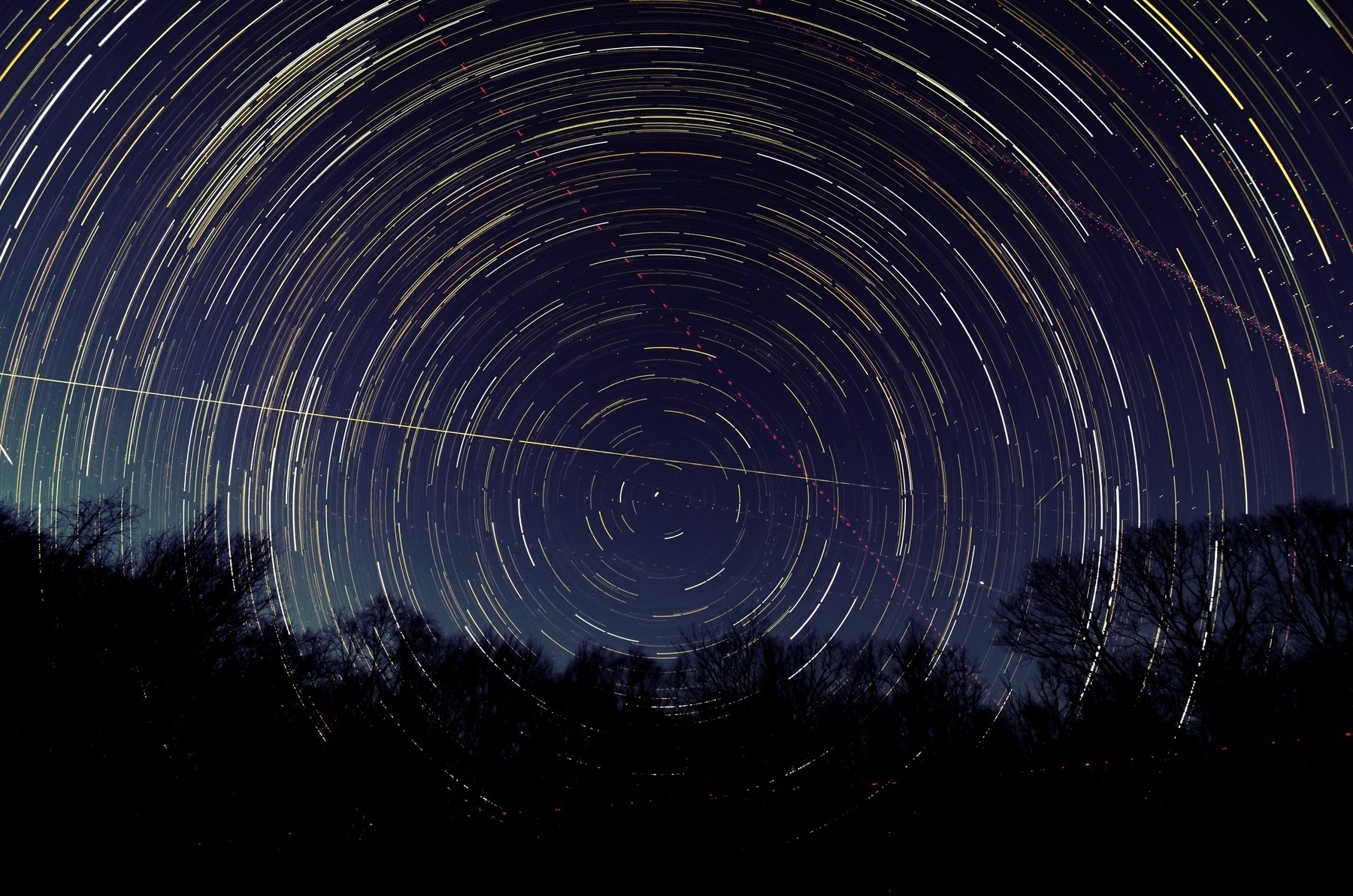
Sirius fun
When one thinks of astrophotography, these two aspects come to mind: 1. Rock solid mount with tracker to eliminate shakes and 2. Perfect focus to get pinpoint stars. The kind of astrophotography in this post ignores - actually violates both these principles. Some time last month, I made a post about defocusing the lens and capturing colors of twinkling Sirius. There is another way to see the colors of a star. In this method, instead of defocusing, the camera rig is shaken to create star trails. The resulting trails of bright twinkling star show the colors nicely. Here are a couple of these trails of Sirius. I like the image on the right more as it has some extra effect. The lens got defocused while I was shaking the camera and that added another dimension to it.
Along with Sirius, I also captured trails of Rigel (left), Betelguese (middle) and the three stars (right) in the belt of Orion : Alnitak, Alnilam and Mintaka. I think they look pretty cool. Rigel is bright and a blue/white star similar to Sirius but the distribution of colors looks different. Betelguese is a red giant and it shows only one color - orange. These are fun little art projects when there isn't enough time to setup the mount and telescope and capture hours-long exposures.
